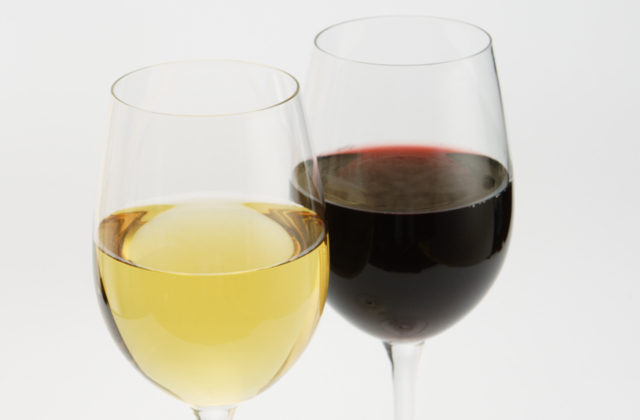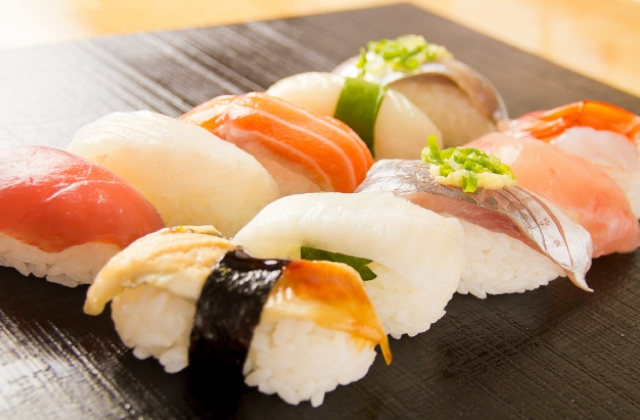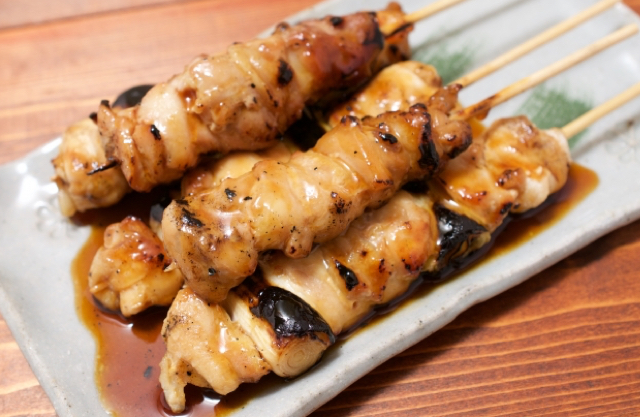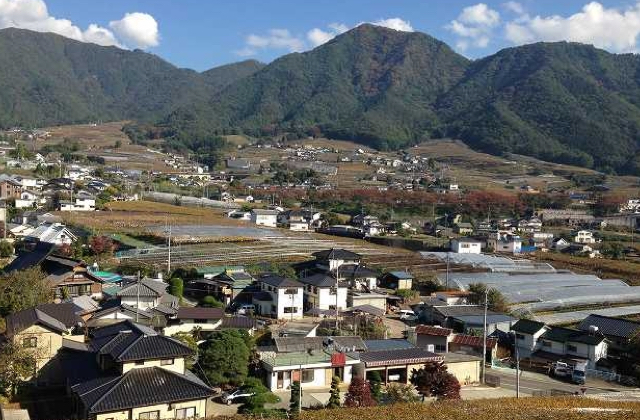TRG Info and Advice
Japanese Wines: Not What They Used to Be
Many of you have probably enjoyed, or at least tried, sake and shochu as an accompaniment to lunch or dinner while you are in Japan. But have you ever tried a glass of Japanese wine? If not, why not?
The main feature of Japanese wine is its delicateness, making it a naturally perfect match for the exquisite flavors of Japanese cuisine. It goes especially well with sushi, tempura and sukiyaki.
Wine is being produced all around Japan from Hokkaido in the north to Miyazaki in the south. The top Japanese wine producers in Japan are Yamanashi, Nagano, Hokkaido, Yamagata, Iwate and Niigata prefectures. The quality of Japanese wine has been showing great development these days, and some wines have even received the Gold Prize at international wine contests abroad.
From October 30, 2018, only wine brewed within Japan using 100% Japan-produced grapes can be labelled as Japanese wine. Further, only wine with more than 85% of its grapes produced in the prefecture of brewing can indicate the region in its name, e.g. Koshu Wine, or on its label. In addition, the year in which the wine was produced can be on the label only if more than 85% of its grapes are harvested in the same year. These regulations allow wine producers to differentiate their wine from others more distinctively than before.
In fiscal year 2016, 15,849 kiloliters of Japanese wine were produced, comprising merely about 5 per cent of Japan’s total wine market. It is expected that after the rule changes mentioned above encourage new product development, more attractive and quality wines will be produced.
Wine making in Japan
Wine making in Japan began on a large scale after the Meiji Restoration in 1868. In the process of modernization that involved learning from the West about political systems, culture and industry, grape production and wine making were also promoted as a part of the government’s industrial development policy.
However, there was no custom of drinking wine in Japan at the time. The techniques for grape growing and wine making practices had many problems, too, so wine did not become popular among Japanese people. They liked sweetened grape liquor better, and sweetened grape liquor was being produced and sold in order to earn the money needed to continue authentic wine making.
Table wine began to be consumed around 1964, when the first Tokyo Olympics were held. After a period of high economic growth in the 1970s, wine consumption increased along with the westernization of the Japanese diet, and in 1975, the consumption of authentic wine surpassed that of sweetened wine.
After several wine booms, including the Beaujolais Nouveau boom and the red wine boom focusing on the health benefits of polyphenols, more and more people enjoy drinking wine casually.
Japanese grape varieties
Koshu
Koshu is a white grape variety that represents Japan.
The Koshu variety was brought to China via the Silk Road around the 6th or 7th centuries. After being cross-bred with Chinese wild mountain grapes, it was delivered to Japan in the 8th century. Originally Koshu was grown for table grapes. There are several grape varieties used for wine making, but Koshu is the one used most often.
Koshu features a refreshing citrusy aroma and mild acidity. The wine has a comparatively low alcohol content, and is light-bodied.
What to pair it with: sashimi (attention: when drunk with blue-backed fish such as mackerel, this wine may enhance the fishy taste), grilled oysters, clams steamed in wine, grilled fish, tempura, oden stew, and vinegary dishes
Muscat Bailey A
Originally from Niigata Prefecture, Muscat Bailey A is a red variety produced by cross-breeding a labrusca variety Bailey and a vinifera Muscat Hamburg.
It features a fruity aroma and a cherry-berry flavor.
What to pair it with: pork shabu-shabu, yakitori with soy-based sauce, stir-fried burdock root, tuna sashimi
In 2010 and 2013, respectively, Koshu and Muscat Bailey A were included by the International Organisation of Vine and Wine (OIV) on their list of grape vine varieties. Thus, Koshu and Muscat Bailey A can now be listed on labels and imported to EU countries.
The largest wine producing area in Japan is Yamanashi, about 90 minutes away from Shinjuku, Tokyo by limited express train, making it a great day-trip destination.
Visit wineries in Yamanashi and find your favorites!
Here are some of the wineries to visit.
Haramo Wine
http://www.haramo.com
3181 Katsunuma, Katsunuma-cho, Koshu, Yamanashi 409-1316
E-mail: info@haramo.com
Hours: 9:00 am – 5:00 pm
Closed: Open 365 days a year
Getting here: 20 minutes on foot from Katsunuma-Budokyo Station on JR Chuo Honsen Line
Grace Wine
http://www.grace-wine.com/f-english/our_winery/katsunuma/index.html
173 Todoroki Katsunuma-cho, Koshu, Yamanashi 409-1315
E-mail: info@grace-wine.com
Hours: 9:00 am – 4:30 pm
Closed: Year-end and New Year’s
Getting here: About a 10-minute taxi ride from Katsunuma-Budokyo Station on JR Chuo Honsen Line
Katsunuma Winery
http://www.katsunuma-winery.com/english/index.html
371 Shimoiwasaki, Katsunuma-cho, Koshu-shi, Yamanshi 409-1313
Hours: 9:00 am – 4:00 pm
Closed: Year-end and New Year’s
Getting here: 7 minutes by car from Katsunuma-Budokyo Station on JR Chuo Honsen Line or 15 minutes by car from Enzan Station on JR Chuo Honsen Line
Katsunuma Winery offers guided tours. For details, please get in touch via the online contact form at http://www.katsunuma-winery.com/contact
Suntory Tomi no Oka Winery
2768 Onuta, Kai, Yamanashi 400-0103
Hours: 9:30 am – 5:00 pm (last entry 4:30 pm)
Closed: Tuesday and Wednesday*
*Closed only on Wednesdays from August – November
Closed to the public every day from January until late March.
Getting here: 15-minute taxi ride from Ryuo Station on JR Chuo Honsen Line or 30-minute taxi ride from Kofu Station on JR Chuo Honsen Line
Tomi no Oka Winery offers guided tours. For details, please contact by phone: 0551-28-7311 (9:30 pm – 4:30 pm).
Crambon Wine
http://www.kurambon.com/english/index.html
835 Shimoiwasaki, Katsunuma-cho, Koshu-shi, Yamanashi 409-1313
E-mail: info@kurambon.com
Hours: 9:00 am – 5:00 pm (The shop is open 9:00 am – 12:00 pm and 1:00 pm – 5:00 pm* *Wine tasting is available until 4:30 pm)
Closed: Year-end and New Year’s
Getting here: 8-minute taxi ride from Katsunuma-Budokyo Station on JR Chuo Honsen Line
Crambon Wine offers wine tasting for 500 JPY (refund available upon purchase of wine or juice). A guided tour by the owner is available with prior booking. For details, please contact the winery.
Chateau Lumière
http://www.lumiere.jp/en
624 Minami-noro, Ichinomiya-cho, Fuefuki-shi, Yamanashi 405-0052
E-mail: winery@lumiere.co.jp
Hours: 9:30 am – 5:30 pm
Closed: Year-end and New Year’s
Getting here: 10-minute taxi ride from Katsunuma-Budokyo Station on JR Chuo Honsen Line or 15-minute taxi ride from Enzan Station on JR Chuo Honsen Line
Chateau Lumière offers guided tours with prior booking.
For details, please contact the winery.
Maruki Winery
http://www.marukiwine.co.jp/english.html
2488 Shimoiwasaki, Katsunuma-cho, Koshu, Yamanashi 409-1313
Contact: 0553-44-1005
Hours: 8:30 am – 5:00 pm
Closed: Year-end and New Year’s
Getting here: 10 minutes by car from Katsunuma-Budokyo Station on JR Chuo Honsen Line
The oldest winery in existence in Japan, Maruki Winery offers winery tours and grape picking. Please book at least three days prior to your visit. For details and booking, please contact winerytour@marukiwine.co.jp.
Château Mercian
http://www.chateaumercian.com/en/
1425-1 Shimoiwasaki, Katsunuma-cho, Koshu-shi, Yamanashi 409-1313
Contact: 0553-44-1011
Hours: 9:30 am – 4:30 pm
Closed: Tuesday, year-end and New Year’s
Getting here: 10-minute taxi ride from Katsunuma-Budokyo Station on JR Chuo Honsen Line
Château Mercian offers winery tours (charged). For details, please contact the winery.
Marufuji Winery
http://www.rubaiyat.jp/en
780 Fujii Katsunuma-cho Koshu-Shi, Yamanashi
Contact: http://www.rubaiyat.jp/en/contact_us
Hours: 9:00 am – 4:30 pm
Closed: Saturdays, Sundays and national holidays
Getting here: 10-minute taxi ride from Katsunuma-Budokyo Station on JR Chuo Honsen Line
Marufuji Winery offers tours for free. No booking necessary.











